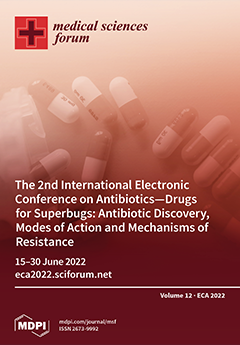Introduction: Urinary tract infections (UTIs) are one of the most common infections both in the community and in the hospital setting. Aim: The aim of this study is to investigate the etiological spectrum and antimicrobial resistance of the most frequently isolated pathogens associated with UTIs in ambulatory patients in Varna city, Bulgaria during a seven-month period (October 2020–April 2021). Materials and methods: A total of 1600 urine samples, collected from patients with suspected UTIs were tested. Screening for bacterial growth was performed using an HB&L Uroquattro instrument (ALIFAX, Italy). Species identification and antimicrobial susceptibility testing were performed using a VITEK 2 Compact System (bioMerieux) and the Kirby–Bauer disk diffusion method. Results: A total of 127 urine samples (7.9%) were positive for bacterial growth using the HB&L. From these samples, 127 bacterial pathogens were isolated: Gram negative bacteria were found in 62.2% (n = 79) and Gram positive bacteria were found in 37.8% (n = 48).
E. coli was the predominant species associated with UTIs in the group of patients studied (77%, n = 61). The Gram-positive bacteria accounted for 37.8% (n = 48), with
E. faecalis being the leading pathogen in this group (87.5%, n = 42)
. Staphylococcus saprophyticus and
Streptococcus agalactiae were diagnosed in 8% (n = 4) and 4% (n = 2), respectively. The resistance rates in the group of Gram-negative isolates (n = 79) in decreasing order were as follows: ampicillin, 64.5% > trimethoprim/sulfamethoxazole, 35.4% > ciprofloxacin, 29.1% > amoxicillin-clavulanic acid, 27.8% > cefuroxime, levofloxacin, 21.5% > fosfomycin, 12.6% > ceftriaxone, 13.9% > ceftazidime, 10.1% > gentamicin, nitrofurantoin, 6.3% > nitroxoline, 5%. The resistance rates among the isolates of
E. faecalis (n = 42) were as follows: ciprofloxacin, 28.6% > gentamicin, 23.8% > levofloxacin, 19% > nitrofurantoin, 4.7% > amoxicillin, 2.4%. A low rate of third-generation cephalosporin resistance (ceftazidime, cefotaxime and ceftriaxone) was detected among the representative of order
Enterobacterales in this study. The rates of ESBL-producing isolates, confirmed by the phenotypic DDST, were as follows: 5% in
E. coli (n = 4), and 2.5% in
K. pneumoniae (n = 2) and
Enterobacter cloacae (n = 2). No resistance to meropenem, amikacin, vancomycin and teicoplanin was found in the collection of isolates studied (n = 127). Conclusion: The etiological spectrum of UTIs in ambulatory patients was dominated by
E. coli, followed by
E. faecalis. In the group of Gram-negative uropathogens, high resistance rates to ampicillin, trimethoprim/sulfamethoxazole and quinolones were detected. Third-generation cephalosporins, fosfomycin, nitrofurantoin and nitroxoline retained very good activity. Among the
Enterococcus faecalis isolates, the second most commonly isolated bacterial species, decreased activity of the quinolones was found too, but the aminopenicillins and nitrofurantoin remained highly active.
Full article



